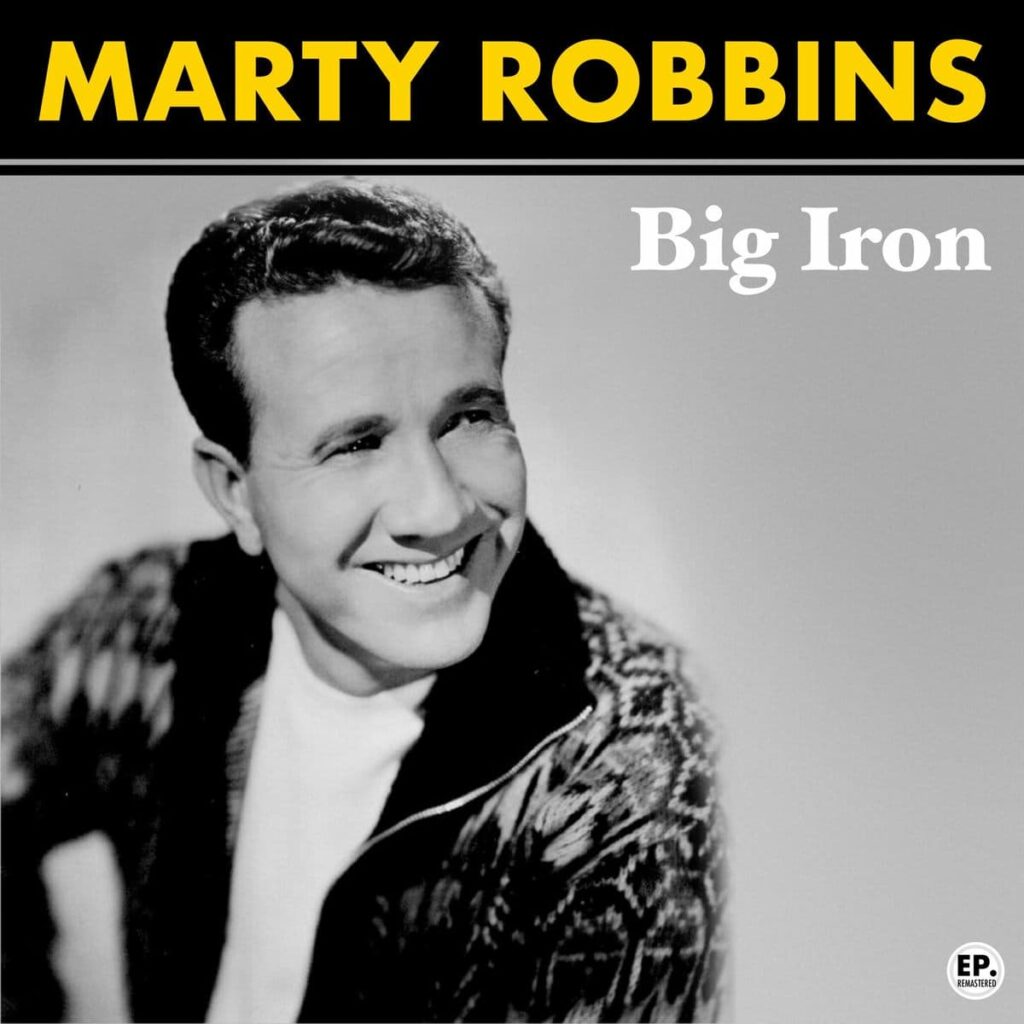
A Western Ballad of Justice and Fate, Carried by the “Big Iron on His Hip”
There are songs that transport us, not just to another time, but into another world entirely — where dusty main streets, sun-bleached saloons, and the quiet tension of a duel feel as real as the air we breathe. One of those rare pieces is “Big Iron”, written and performed by Marty Robbins. First recorded on April 7, 1959, and released later that year on the now-legendary album Gunfighter Ballads and Trail Songs, the song quickly carved out its place in American music history. When issued as a single in 1960, it rose to #5 on the Billboard Hot Country chart and even crossed over to the Billboard Hot 100 at #26 — proof that Robbins’ storytelling could captivate audiences far beyond the boundaries of country and western.
At its heart, “Big Iron” is a story of confrontation and destiny. Robbins invites us into the town of Agua Fria, where a stranger rides in with quiet purpose. This stranger is revealed to be an Arizona Ranger, come to put an end to the reign of Texas Red, an outlaw only twenty-four years old but already feared for having taken twenty lives. The townspeople whisper that the Ranger doesn’t stand a chance — but Robbins spins the narrative with suspense, each verse tightening the rope of anticipation. And then comes the showdown: Texas Red, “not clear with leather,” lies defeated in the dust, while the Ranger’s big iron — the revolver that gives the song its name — delivers both justice and inevitability.
The meaning of the song extends beyond its cowboy tale. “Big Iron” reflects themes of moral courage, the thin line between life and death, and the stark reality of justice in the old frontier. For older listeners who grew up with western films and radio dramas, the song rekindles the memory of a cultural era when tales of gunfighters and lawmen shaped American imagination. Robbins didn’t merely sing a song — he crafted a ballad that feels like a short story, with clear characters, conflict, and resolution, all within three minutes of music.
Musically, “Big Iron” is deceptively simple. Robbins’ smooth, steady vocals carry the narrative with dignity, while the arrangement is clean and uncluttered, allowing the listener to focus entirely on the tale. There is no unnecessary flourish, no overproduction — just the rhythm of a guitar and the weight of the words. That restraint is part of its enduring charm. It is the kind of song that leaves space for memory, letting older audiences close their eyes and recall the countless westerns that once flickered across black-and-white televisions or filled Saturday matinees.
Over the decades, “Big Iron” has maintained its grip on popular culture. The Western Writers of America ranked it among the Top 100 Western Songs of All Time, securing the No. 11 position. In more recent years, the song found a surprising new audience through its inclusion in the 2010 video game Fallout: New Vegas, proving that its spellbinding narrative can cross generations as easily as it once crossed music charts.
For those who lived through the golden age of country and western music, “Big Iron” is more than a song — it is a memory. It is the sound of a time when stories were sung around radios, when heroes and outlaws lived in verse, and when Marty Robbins’ voice could take us, if only for a moment, to a town called Agua Fria where destiny waited with a revolver gleaming in the sun.